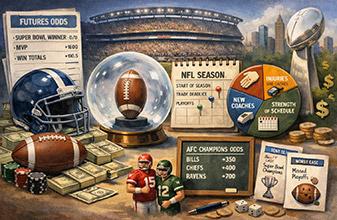Tournament craps

Casino games tournaments are fun, and they can be profitable too. In upcoming articles, we will continue to publish a series of excerpts from Stanford Wong’s book, Casino Tournament Strategy.
This article is an introduction to craps and covers the basics of tournament craps.
Overview of Betting Strategy
Most of your edge in crap tournaments comes from a simple money-management strategy: Either win or bust out. Seldom should a tournament expert lose with chips left.
The details of proper betting strategy depend on how many people per table advance to the next round, how many good players are at the table, how the end of the round is determined, and the size of maximum bets in relation to your bankroll.
Most Serious Opponent
Your most serious opponent is the person who is most likely to beat you if you ignore that person. When you are BR*, your most serious opponent generally is the person with the highest bankroll that is not BR*. However, an opponent with $400 who is willing to make big bets is more likely to beat you than someone who has $500 but will never make a big bet. And of course some of your opponents you may recognize as having played skillfully in past tournaments. So your most serious opponent is the person who has the best combination of bankroll and either tournament skills or aggressiveness.
Chip Counting: The Critical Skill
The most important skill required to win prizes in crap tournaments is being able to tell how many chips your opponents have. You have a big edge in a crap tournament if you can tell precisely how you stand compared to your competition.
Of course you have to be able to estimate fairly precisely how many chips your opponents have in the rack in front of them. That is not easy. It is easy to underestimate the bankroll of an opponent on the other end of the table. The more chips someone has the harder it is to estimate the bankroll. Practicing chip counting is a good Idea.
For someone who has a large pile of chips, you might try estimating inches of chips rather than number of chips.
Watch your opponents’ hands. Competitors are not allowed to have tournament chips in their hands except temporarily while making a bet or removing chips from the layout. Chips not currently being bet belong in the rack, not in the hand. Anytime you see an opponent holding chips in a hand, you should immediately ask a supervisor to correct the situation. Likewise you should complain if an opponent’s chips are in the rack but covered by hands or arms or whatever. If you are beaten, be sure it is because of luck or skill; do not get beaten by hidden chips.
Undercounting an opponent’s chips seems to be much more common than overcounting them, and is more costly. So play it safe. If more than two people advance from your table, do not try to be BRN, the lowest bankroll of those that advance; it is safer to try to be the next higher bankroll. For example, if six people will advance from your table, try to be BR5 or higher.
This article is part of a series, to be continued…
Excerpted with permission from Casino Tournament Strategy by Stanford Wong, edited for this format.











Please log in or register to leave a comment